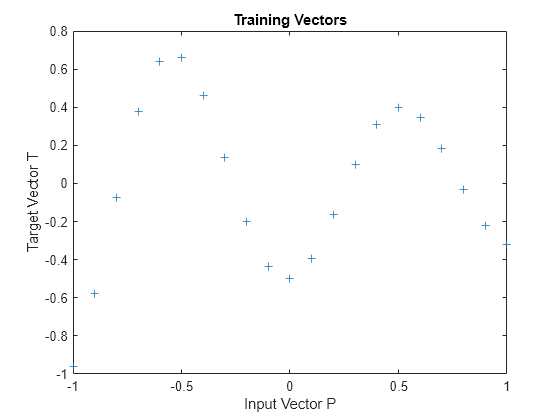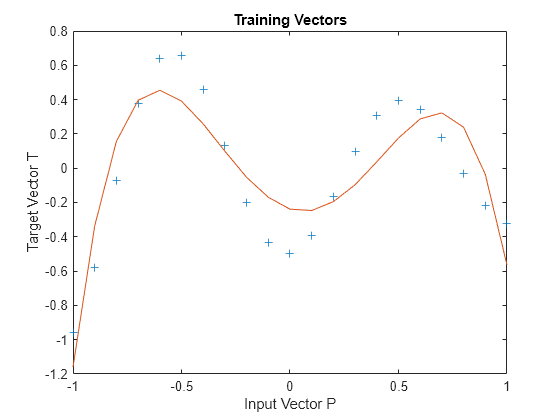径向基神经元过叠
径向基网络被训练为用目标输出响应特定输入。然而,由于径向基神经元的分布程度太高,每个神经元的响应基本相同,因此无法设计网络。
定义 21 个输入 P 和相关目标 T。
P = -1:.1:1; T = [-.9602 -.5770 -.0729 .3771 .6405 .6600 .4609 ... .1336 -.2013 -.4344 -.5000 -.3930 -.1647 .0988 ... .3072 .3960 .3449 .1816 -.0312 -.2189 -.3201]; plot(P,T,'+'); title('Training Vectors'); xlabel('Input Vector P'); ylabel('Target Vector T');

函数 NEWRB 可快速创建一个逼近由 P 和 T 定义的函数的径向基网络。
除了训练集和目标,NEWRB 还使用了两个参量,分别为误差平方和目标与分布常数。径向基神经元的分布设置为非常大的数量。
eg = 0.02; % sum-squared error goal sc = 100; % spread constant net = newrb(P,T,eg,sc);
NEWRB, neurons = 0, MSE = 0.176192
由于径向基神经元的输入区域有很大的重叠,NEWRB 无法正确设计径向基网络。所有神经元始终输出 1,因此不能用于产生不同响应。要查看网络在训练集上的表现,请使用原始输入对网络进行仿真。将结果绘制在与训练集相同的图上。
Y = net(P); hold on; plot(P,Y); hold off;
